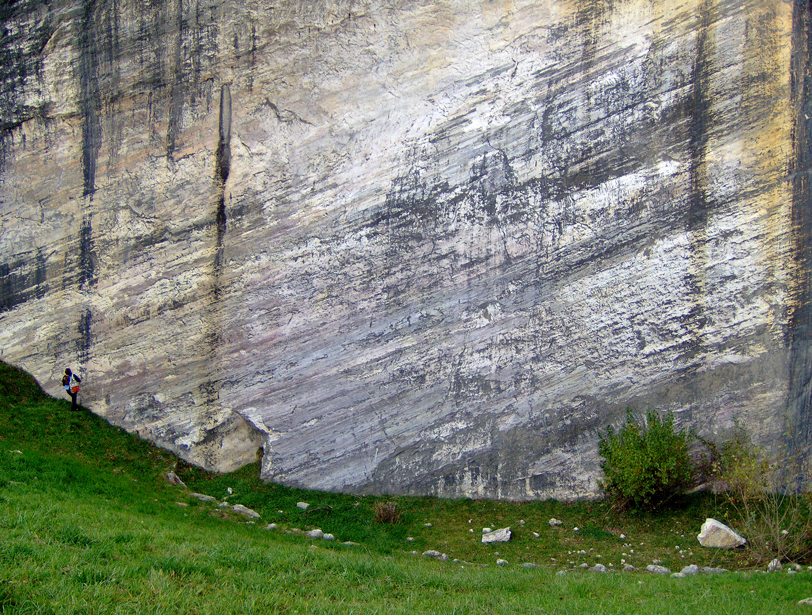Answers to two related fundamental questions about earthquakes remain elusive: Are there observable precursory processes that foreshadow an imminent earthquake? Is earthquake size predetermined or the result of the random chance encounter of conditions that stop its growth? Dramatic increases in the ranges of scales over which scientists observe fault slip have revealed unanticipated complexity.
Researchers now understand that faults do not just remain totally locked between earthquakes (rapid slip events that efficiently radiate seismic waves) or creep steadily and slowly (without radiating). Instead, faults may be better described as patchworks of slip behaviors spanning a complete spectrum between these end members.
Given this new view, it seems to be time to assess scientific understanding, to determine how to continue moving forward, and to inspire and train tomorrow’s researchers. Toward these ends, an international weeklong course was held in November 2014 at the Cargèse Institute of Scientific Studies in Corsica, France. Below are some key lessons learned.
Laboratory studies and theoretical models suggest that earthquakes are the culmination of accelerating processes that may manifest as growing aseismic slip, often accompanied by foreshocks, tremor, and other seismic phenomena.
Slow, aseismic slip acts as a significant means of relieving stress applied to faults and as a means of accelerating stress accumulation on neighboring stuck fault patches that eventually break and radiate seismic waves. Innovative seismic waveform and statistical analyses have revealed highly varied seismic radiation and seismicity patterns, inferred to be proxies for the more significant, but harder to observe, aseismic slip that drives them. Course participants agreed that the next challenges are to verify this proxy status by detecting aseismic deformation directly and to evaluate how seismic and aseismic modes interact.
Laboratory studies and theoretical models also suggest that earthquakes are the culmination of accelerating processes that may manifest as growing aseismic slip, often accompanied by foreshocks, tremor, and other seismic phenomena. Recent observations of these phenomena and measurements of seismic P-wave characteristics that scale with magnitude suggest earthquake size may be predetermined. However, attendees stressed that the community still needs to assess the robustness and uniqueness of these observations, particularly when not made retrospectively.
The course concluded with student-led discussions of new ways to meet the above challenges, two of which we highlight. First, the exponential growth of seismicity rates associated with human activities, principally wastewater injection, presents opportunities to conduct unprecedented experiments on real crustal faults. Second, the physical conditions that determine which fault slip mode dominates remain a matter of speculation. New methods show promise for four-dimensional imaging of the properties that may control the mode of slip.
Of the 98 attendees, 77 were students and postdocs, and 18 countries were represented. The Centre National de la Recherche Scientifique (France), the Laboratory of Excellence program OSUG@2020 of the National Research Agency (France), the U.S. National Science Foundation, the European Geophysical Union, and the Université de Savoie (France) provided support.
—David Marsan, Université de Savoie, Le Bourget du Lac, France; email: [email protected]; Joan Gomberg, U.S. Geological Survey and University of Washington, Seattle, Wash.; and Michel Bouchon, Centre National de la Recherche Scientifique and Université Joseph Fourier, Grenoble, France
Citation: Marsan, D., J. Gomberg, and M. Bouchon (2015), Exploring earthquakes, slow slip, and triggering, Eos, 96, doi:10.1029/2015EO025955. Published on 20 March 2015.
Text © 2015. The authors. CC BY-NC 3.0
Except where otherwise noted, images are subject to copyright. Any reuse without express permission from the copyright owner is prohibited.

